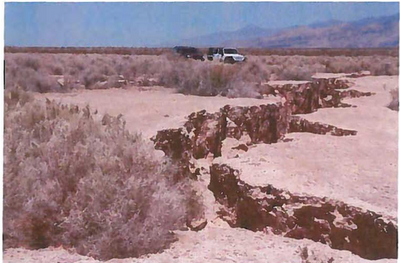Understanding the Scale of Destruction

The Ivanpah Solar project being built in the northeastern Mojave Desert will destroy nearly 5.6 square miles of desert habitat when it is completed, an swath of previously pristine desert that is difficult to fathom. Thousands of creosote bushes, Mojave yucca, cholla cactus, and rare wildflowers. Cactus wrens, thrashers, and burrowing owls. Kit foxes, and jackrabbits. Rattlesnakes and desert iguanas. And a thriving population of desert tortoises. All of this is lost in our quest to generate 392 megawatts of solar energy -- electrons that could have been produced more efficiently and responsibly with rooftop solar. [click on image to expand] The Ivanpah Solar facility creeps across once pristine desert in the northeastern Mojave Desert. Built in three phases, this photo was taken when desert for only two of the phases had been cleared and bulldozed. [click on image to expand] A fraction of phase 2 is visible in this photo, identifiable by the missing veg...






